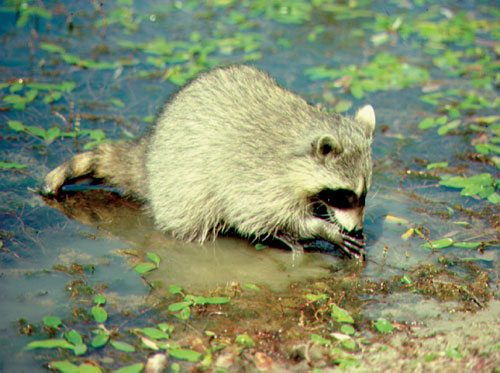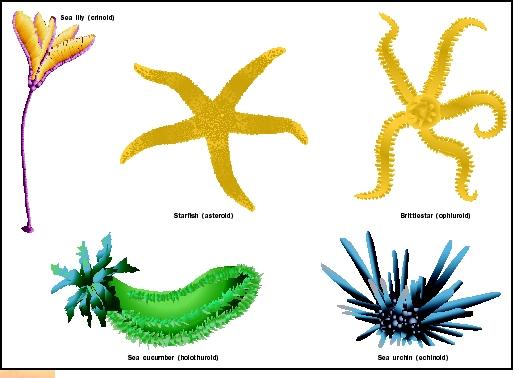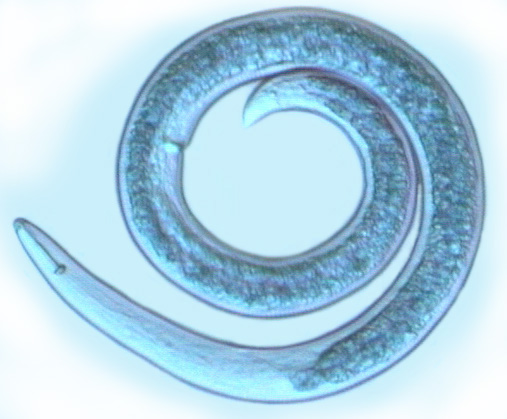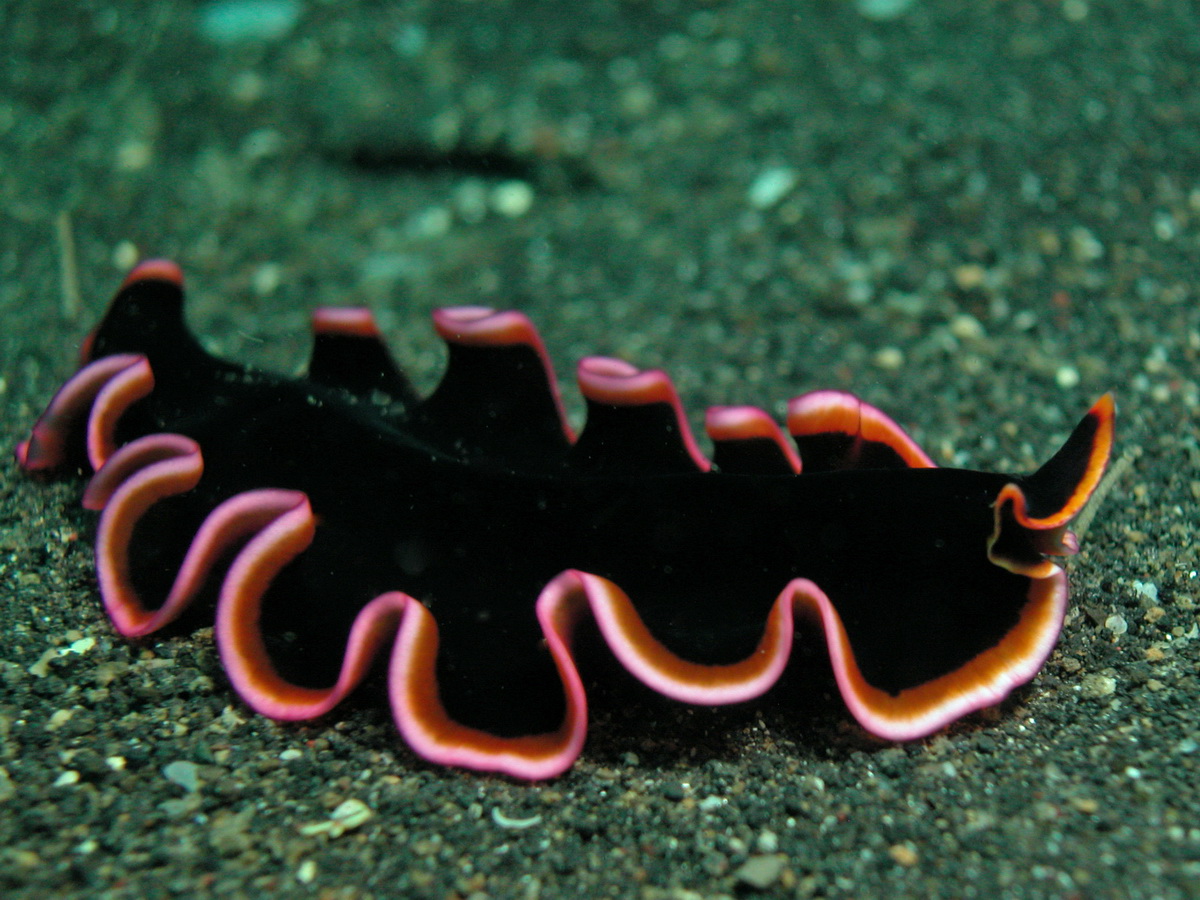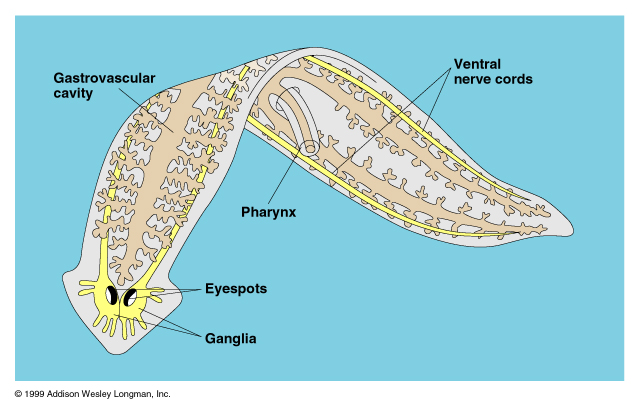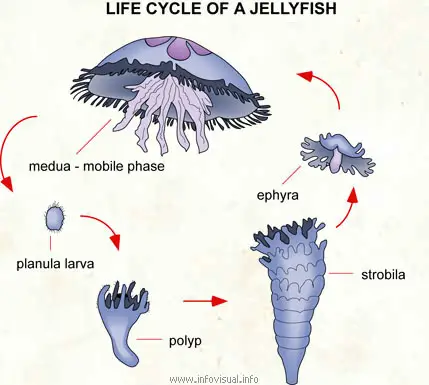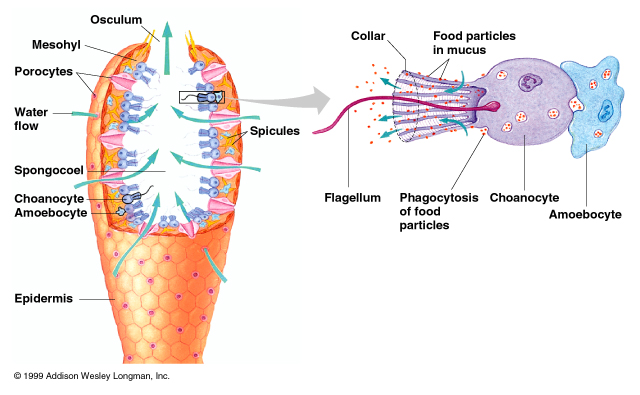Characteristics
Vertebrates are usually characterized by an arranged endoskeletal elements flanking the spinal cord. There are two pairs of elements in each metamere and on each side. They are called the interdorsals and basidorsals, and in the gnathostomes there are two additional pairs ventrally to the notochord, called the interventrals and basiventrals. There are other elements called arcuali, and they can fuse to the notochordal calcification. The centrum is the Vertabra, and the Vertabrae is the Vertebral column.
Class Descriptions
There are Four groups of Vertebrates, reptiles, amphibians, birds, and mammals.
Reptiles
1: Alligator
2: Pseudemys Floridana
Cooters
3:Cheldrya Serpintina
Snapping Turtle4:Gopherus Polyphemus
Gopher
5:Anolis Carolinenis
Green Anole
6:Anolis Sagrei
Brown Anole
7:Boa Constrictor
Snake
8:Coluber Constrictor
Snake
9:Tantilla Relicta Neilli
Crowned Snake
10:Eumeces Laticeps
Skink
Ampibians
1:Bufo terrestris
Southern Toad
2:Acris gryllus dorsalis
Cricket Frog
3:Hyla cinerea
Tree Frog
4:Hyla squirella
Tree Frog
5:Osteopilus septentrionalis
Tree Frog6:Eleutherodactylus planirostris
Neotropical Frogs7:Scaphiopus holbrookii holbrookii
Spadefoot Toads8:Rana sphenocephala
True Frogs9:Ambystoma talpoideum
Mole Salamanders10:Rana catesbeiana
True Frogs
Birds
1:Bubo virginianus
Owl
2:Ardea herodias
Heron 3:Butorides striatus
Heron
4:Egretta thula
Egret
5:Buteo lineatus
Hawk
Mammals
1:Lasiurus borealis
Bats
2:Tadarida brasiliensis cynocephala
Free Tailed Bats
3:Lasiurus intermedius
Bat
4:Dasypus novemcinctus
Armadillos5:Procyon lotor
Racoon
6:Felis domesticus
Domestic Cat
7:Urocyon cinereoargenteus
Grey Fox
8:Sigmodon hispidus
Rat
9:Sciurus carolinensis
Squierrel
10:Scalopus aquaticus
Mole
Reference: http://tolweb.org/Vertebrata
http://natl.ifas.ufl.edu/Vert.htm
Sunday, January 23, 2011
Friday, January 21, 2011
Arthropoda
Characteristics
This is the largest phylum with more than 80% of the living animals falling into this category. All members of this phylum have and external skeleton made of chitin ( the principal component of the exoskeletons of arthropods and of the bodies of fungi.) This provides protection for the organism. The body of the arthropods is composed of numerous segments called Somites. They have a dorsal heart, as well as a ventral nervous system. Arthropods have joint appendages , that are modified into organs for walking, eating and grasping purposes.
Major groups
Myriapada (millipedes)
Various wormlike arthropods of the class Diplopoda, having a long body composed of many narrow segments. Most have two pairs of legs.
Crustacia (crayfish)
Closely related to but smaller than the lobsters.
Insecta (insects)
Any animal of the class Insecta, comprising small, air-breathing arthropods having the body divided into three parts (head, thorax, and abdomen), and having three pairs of legs and usually two pairs of wings.
Arachnidia (spiders)
Ecological roles
They are of such importance because of their numbers, and diversity (more than 874,000 living.) Insects play an important role in the pollination of vegetation, and some are also a nutritious source of food. More than a thousand Arthropods have not been discovered and named. Most of these insects come from the rain forest, which has not yet been well explored.
References
http://www.entomology.umn.edu/cues/4015/handouts/Orders.htm
http://www.scienceclarified.com/Al-As/Arthropods.html
http://www.dictionary.com
This is the largest phylum with more than 80% of the living animals falling into this category. All members of this phylum have and external skeleton made of chitin ( the principal component of the exoskeletons of arthropods and of the bodies of fungi.) This provides protection for the organism. The body of the arthropods is composed of numerous segments called Somites. They have a dorsal heart, as well as a ventral nervous system. Arthropods have joint appendages , that are modified into organs for walking, eating and grasping purposes.
Major groups
Myriapada (millipedes)
Various wormlike arthropods of the class Diplopoda, having a long body composed of many narrow segments. Most have two pairs of legs.
Closely related to but smaller than the lobsters.
Insecta (insects)
Any animal of the class Insecta, comprising small, air-breathing arthropods having the body divided into three parts (head, thorax, and abdomen), and having three pairs of legs and usually two pairs of wings.
Arachnidia (spiders)
any of numerous predaceous arachnids of the order Araneae, most of which spin webs that serve as nests and as traps for prey.
Ecological roles
They are of such importance because of their numbers, and diversity (more than 874,000 living.) Insects play an important role in the pollination of vegetation, and some are also a nutritious source of food. More than a thousand Arthropods have not been discovered and named. Most of these insects come from the rain forest, which has not yet been well explored.
References
http://www.entomology.umn.edu/cues/4015/handouts/Orders.htm
http://www.scienceclarified.com/Al-As/Arthropods.html
http://www.dictionary.com
Echinoderms
Characteristics
Echinoderms are usually characterized by radial symmetry, where they have several arms. The body consists of 5 equal segments in an echinoderm, where each holds different sets of internal organs. Echinoderms have no heart, brain, or eyes. Echinoderms have tentacle like structures called tube feet, they are controlled by a hydraulically vascular system. It's mouth is situated in the middle of its body on the bottom. There are about 6,000 known species of echinoderms.
Major groups
Echinoderms are marine invertebrates, with an internal skeleton and are often covered in spines.
The groups that are included in Echinoderms are:
Asteroidea (starfish) usually 5 limbs or more
Crinoidea (sea lilies, and sand dollars)
Echinoidea (sea urchins)
Holothuroidea (sea cucumbers etc.)
Ecological roles
They have ecological importance in mainly just surviving, or being eaten. Humans use echinoderms are food, medicine, and research.
Referances
http://www.starfish.ch/reef/echinoderms.html
http://www.daviddarling.info/encyclopedia/E/echinoderm.html
Echinoderms are usually characterized by radial symmetry, where they have several arms. The body consists of 5 equal segments in an echinoderm, where each holds different sets of internal organs. Echinoderms have no heart, brain, or eyes. Echinoderms have tentacle like structures called tube feet, they are controlled by a hydraulically vascular system. It's mouth is situated in the middle of its body on the bottom. There are about 6,000 known species of echinoderms.
Major groups
Echinoderms are marine invertebrates, with an internal skeleton and are often covered in spines.
The groups that are included in Echinoderms are:
Asteroidea (starfish) usually 5 limbs or more
Crinoidea (sea lilies, and sand dollars)
Echinoidea (sea urchins)
Holothuroidea (sea cucumbers etc.)
Ecological roles
They have ecological importance in mainly just surviving, or being eaten. Humans use echinoderms are food, medicine, and research.
Referances
http://www.starfish.ch/reef/echinoderms.html
http://www.daviddarling.info/encyclopedia/E/echinoderm.html
Mollusca
Characteristics
Mollusks are bilaterally symmetrical, and has more than two cell layers, organs, and tissues. The body of mollusks has no cavity. They have a through gut, with a mouth and an anus. They have a pair of kidneys, and reproduce normally.Mollusks have an open circulatory system and have gaseous exchange organs called ctenidial gills. They feed on a wide range of materials, and live in various environments.
Major groups
Mollusca is a very wide range group that includes clams, snails, and octopus. Gastropods (snails) are coiled while bivalves (clams) have two shells that are bilaterally symmetrical.
All Mollusca:
Abalone
Bivalves (ribbed)
Bivalves (smooth)
Bivalves (mussel)
Bivalves (scallop)
Gastropods (high spiral)
Gastropods (low spiral)
Ecological roles
Mollusks which include land snails, freshwater snails, mussels, clams, and slugs, are vital to healthy ecosystems. Land snails, for example, not only provide food for a host of small mammals and birds, but they play vital roles in recycling nutrients in forests. Freshwater snails also provide food for fish, including trout and salmon, and recycle plant and animal waste. Mollusks are also considered ecological indicators, providing a window into the health of and entire ecosystem
Referances
http://www.earthlife.net/inverts/mollusca.html
http://www.msnucleus.org/membership/html/jh/biological/mollusca/lesson1/mollusca1a.html
Mollusks are bilaterally symmetrical, and has more than two cell layers, organs, and tissues. The body of mollusks has no cavity. They have a through gut, with a mouth and an anus. They have a pair of kidneys, and reproduce normally.Mollusks have an open circulatory system and have gaseous exchange organs called ctenidial gills. They feed on a wide range of materials, and live in various environments.
Major groups
Mollusca is a very wide range group that includes clams, snails, and octopus. Gastropods (snails) are coiled while bivalves (clams) have two shells that are bilaterally symmetrical.
All Mollusca:
Abalone
Bivalves (ribbed)
Bivalves (smooth)
Bivalves (mussel)
Bivalves (scallop)
Gastropods (high spiral)
Gastropods (low spiral)
Ecological roles
Mollusks which include land snails, freshwater snails, mussels, clams, and slugs, are vital to healthy ecosystems. Land snails, for example, not only provide food for a host of small mammals and birds, but they play vital roles in recycling nutrients in forests. Freshwater snails also provide food for fish, including trout and salmon, and recycle plant and animal waste. Mollusks are also considered ecological indicators, providing a window into the health of and entire ecosystem
Referances
http://www.earthlife.net/inverts/mollusca.html
http://www.msnucleus.org/membership/html/jh/biological/mollusca/lesson1/mollusca1a.html
Aschelminthes (Nematode)
Parasite/Unifying
Many nematodes are microscopic. Many nematodes are parasites, and need a host to survive, and thrive. Some nematodes can be harmful to the host while others aren't at all. Nematodes will mainly compete with their host for nutrients. They can also block the lymphatic system (the system in which white blood cells are made to prevent swelling, disease, viruses etc.) which can cause swelling that is dangerous. There are four different types of parasites, human, animal, plant and insect.
References
http://classes.seattleu.edu/biology/biol235/hodin/nematodePriapulidGroup/nematodes/parasite.htm
Many nematodes are microscopic. Many nematodes are parasites, and need a host to survive, and thrive. Some nematodes can be harmful to the host while others aren't at all. Nematodes will mainly compete with their host for nutrients. They can also block the lymphatic system (the system in which white blood cells are made to prevent swelling, disease, viruses etc.) which can cause swelling that is dangerous. There are four different types of parasites, human, animal, plant and insect.
References
http://classes.seattleu.edu/biology/biol235/hodin/nematodePriapulidGroup/nematodes/parasite.htm
Thursday, January 20, 2011
Annelida
Characteristics
They are bilaterally symmetrical, and vary in form. Annelids have more than two cell layers tissue, and organs located in its body. It has two openings in its body, a mouth, and an anus. Its nervous system possesses an anterior nerve ring, ganglia and a ventral nerve chord. It also has a closed circulatory system. Annelids also possesses no true respiratory organs. Annelids are true coelomates and possess true coelom in their body. They are also hermaphrodites. In the end, these creatures live in most environments, like your back yard.
Life function
These worms most of the time prefer to live in aquatic locations. There are over 9,000 species known. Annelids vary in sizes, from the giant earthworms al the way down to the bloodworm. They live quietly in holes or they live more active lives. Growth occurs more laterally than in width. The most common known Annelid is the earth worm, which eats, and re-enriches soil.
Ecological roles
Earthworms have an important ecological role as they eat decomposing organic material. As well as they are decomposers. Many other Annelids have important ecological roles from making nutrient rich soil, to decomposing composts.
Referances
http://www.earthlife.net/inverts/annelida.html
They are bilaterally symmetrical, and vary in form. Annelids have more than two cell layers tissue, and organs located in its body. It has two openings in its body, a mouth, and an anus. Its nervous system possesses an anterior nerve ring, ganglia and a ventral nerve chord. It also has a closed circulatory system. Annelids also possesses no true respiratory organs. Annelids are true coelomates and possess true coelom in their body. They are also hermaphrodites. In the end, these creatures live in most environments, like your back yard.
Life function
These worms most of the time prefer to live in aquatic locations. There are over 9,000 species known. Annelids vary in sizes, from the giant earthworms al the way down to the bloodworm. They live quietly in holes or they live more active lives. Growth occurs more laterally than in width. The most common known Annelid is the earth worm, which eats, and re-enriches soil.
Ecological roles
Earthworms have an important ecological role as they eat decomposing organic material. As well as they are decomposers. Many other Annelids have important ecological roles from making nutrient rich soil, to decomposing composts.
Referances
http://www.earthlife.net/inverts/annelida.html
Wednesday, January 19, 2011
Platyhelminthes
Platyhelminthes
The members of Platyhelminthes are Nematoda, and Rotifera have a vermiform or wormlike shape. They are also the first to have third layer of cells, the mesoderm, instead of the epidermus and gastrodermis. The mesoderm in they're bodies produces muscular layers, an excretory system and a reproductive system. They have complex body cavitys that hold specialized organs, and the fluid for the cavitys act like an hydrostatic skeleton. Flatworms have their bodies loosly filled with cells and have a acoelomate body plan. The cells that fill them up, are called parenchyme, witch is one way of organizing they're body structure. Another way is a plan called pseudocoelomate body plan, witch has a fluid filled cavity full of pseudocoelom. The last body plan is the coelomate body plan, they have they're tissues lined with mesodermal tissue.
Parasites
They also have many parasites, but not all are extremely dangerous. The most watched out are, Trematoda, Cestoda, often called tapeworms as well, and Digenea, also called Flukes.
Friday, January 14, 2011
Phylum Cnidaria
Life functions and Motile form
This phylum contains a vast amount of jellyfish, with their squishy bodies and colorful souls. They also contain hydra, sea anemones, and corals. Their tissues are very organized, and some similar cells go together in groups that are actually called tissue, but no true organs occur. Sometimes their bodies have two, or even three layers. The gastrovascular cavity, or others may call it the coelenteron, has an opening that both serves as mouth and anus. They have two simple body forms, medusa and polyp. Medusa, are adult jellyfish floating and moving around, they have umbrella like shaped bodies and tetramerous, a four part symmetry. Polyp are often sessile, they have tube like bodies and one end is attached to substrate and a mouth. Sometimes they are alone, or in groups and different individuals can have different functions. The Polyps are asexual and reproduce by budding. Medusa use sexual formation of gametes, and even some polyps do this as well. Some of them may be monoecious or dioecious.
Reproduction
Sexual reproduction can result in planula larva, witch means it is ciliated and free swimming. The life cycle of a jelly fish goes, larva, polyp, strobila, ephrya, medua. The last stage being its mobile stage.
Ecological role
Their role in the ecosystem is to keep balance in the food chain. Other fish eat them, and some even ride them. Some fish even use them as homes.
Interesting fact
They are very interesting creatures, they are mostly composed of water, more then 95% and have no brain, heart or bones or no actual eyes.
Reference: http://animaldiversity.ummz.umich.edu/site/accounts/pictures/Cnidaria.html
This phylum contains a vast amount of jellyfish, with their squishy bodies and colorful souls. They also contain hydra, sea anemones, and corals. Their tissues are very organized, and some similar cells go together in groups that are actually called tissue, but no true organs occur. Sometimes their bodies have two, or even three layers. The gastrovascular cavity, or others may call it the coelenteron, has an opening that both serves as mouth and anus. They have two simple body forms, medusa and polyp. Medusa, are adult jellyfish floating and moving around, they have umbrella like shaped bodies and tetramerous, a four part symmetry. Polyp are often sessile, they have tube like bodies and one end is attached to substrate and a mouth. Sometimes they are alone, or in groups and different individuals can have different functions. The Polyps are asexual and reproduce by budding. Medusa use sexual formation of gametes, and even some polyps do this as well. Some of them may be monoecious or dioecious.
Reproduction
Sexual reproduction can result in planula larva, witch means it is ciliated and free swimming. The life cycle of a jelly fish goes, larva, polyp, strobila, ephrya, medua. The last stage being its mobile stage.
Ecological role
Their role in the ecosystem is to keep balance in the food chain. Other fish eat them, and some even ride them. Some fish even use them as homes.
Interesting fact
They are very interesting creatures, they are mostly composed of water, more then 95% and have no brain, heart or bones or no actual eyes.
Reference: http://animaldiversity.ummz.umich.edu/site/accounts/pictures/Cnidaria.html
Phylum Porifera
About Porifera and they're Life functions
The Phylum Porifera contains sponges, and are very very diverse. They have been speculated to have been here millions of years ago, and could possibly even cure disease. There are about 5000 species known across the planet, and only 150 live in freshwater. These wonderful creatures can give use so many answers, if we just ask the question. Their bodies are made up of cellular-level organization, meaning their cells can do different functions. They also have a system of pores, witch are also called ostia, and canals in witch water passes through. Movement is driven by flagellae, and are on special cells called choanocytes. Their support is a skeleton made up of protein collagens and spicules, and it could also be calcareous or siliceous, but those are from different sponge groups. Their sexuality is both sexual and asexual, the asexual version is external buds. Some sponges have internal buds, called gemmules. Sexual reproduction is at the mesohyl, the male gametes are released into the water and sponges near by take them in through their pores, like when they eat. They absorb food through holes they have, and they filter feed, since they cannot travel or hunt for food.
Ecological role
Their ecological role is to give shelter for fish and other animals. They also filter the ocean, and if they keep dieing then we might lose more then a couple of sponges.
Interesting fact
They are such interesting characters, and monophyletic which means they were all thought to be descended from a common ancestor.
Reference:http://animaldiversity.ummz.umich.edu/site/accounts/information/Porifera.html
The Phylum Porifera contains sponges, and are very very diverse. They have been speculated to have been here millions of years ago, and could possibly even cure disease. There are about 5000 species known across the planet, and only 150 live in freshwater. These wonderful creatures can give use so many answers, if we just ask the question. Their bodies are made up of cellular-level organization, meaning their cells can do different functions. They also have a system of pores, witch are also called ostia, and canals in witch water passes through. Movement is driven by flagellae, and are on special cells called choanocytes. Their support is a skeleton made up of protein collagens and spicules, and it could also be calcareous or siliceous, but those are from different sponge groups. Their sexuality is both sexual and asexual, the asexual version is external buds. Some sponges have internal buds, called gemmules. Sexual reproduction is at the mesohyl, the male gametes are released into the water and sponges near by take them in through their pores, like when they eat. They absorb food through holes they have, and they filter feed, since they cannot travel or hunt for food.
Ecological role
Their ecological role is to give shelter for fish and other animals. They also filter the ocean, and if they keep dieing then we might lose more then a couple of sponges.
Interesting fact
They are such interesting characters, and monophyletic which means they were all thought to be descended from a common ancestor.
Reference:http://animaldiversity.ummz.umich.edu/site/accounts/information/Porifera.html
Subscribe to:
Posts (Atom)
